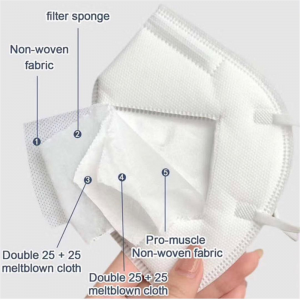N95 Particulate Respirator Face Mask
Item classification
N series: No time limit for protection of non-oily suspended particles
R series: protection of non-oily suspended particles and sweaty suspended particles for eight hours
P series: protection against non-oily suspended particles and sweaty suspended particles without time limit
Some of the carrier particles is oily, and these substances attached to the electrostatic reduces electrically non-woven fabric, so that penetration of fine dust, so for the anti-oil aerosol filter material to go through a special treatment in order to achieve the anti-small Purpose of dust. So each series is divided into 3 levels: 95% , 99% , 99.97% ( ie 95 , 99 , 100 for short ) , so there are 9 categories of filter media.
Second, the European Union EN149 standard:
FFP1 Type Masks : Minimum filter effects, ” 80%
FFP2 masks : Minimum filter effects, ” 94%
FFP3 Type Masks : Minimum filter effects, ” 97%
Third, the Australian AS1716 standard
P1 : Minimum filter effects, ” 80%
P2 : Minimum filter effects, ” 94%
Fourth, Japan MOL verification standards:
According to Japan’s 2005 Nian 2 Yue 7 , issued 0,207,006 Decree, dust masks standard in the following table












